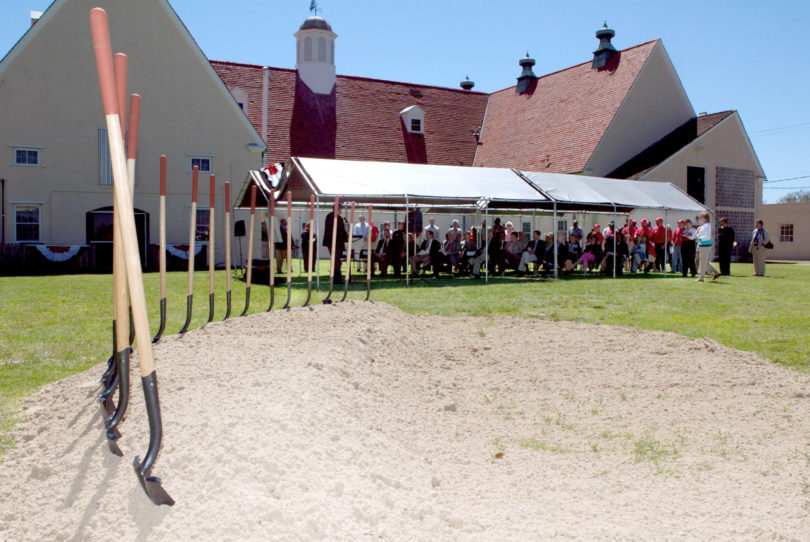The university broke ground on a new construction, renovation and restoration project at the Marine Institute on Sapelo Island on March 29. President Michael F. Adams and Rep. Jack Kingston (R-Ga.) participated in the 11 a.m. ceremony.
The groundbreaking marked the beginning of construction for the Barrier Island Research Facility, which will provide space to house students and visiting faculty and dining and conference spaces for larger groups.
“This new facility will greatly enhance the important work being done by the Marine Institute and will strengthen the university’s ability to support coastal research and advance the university’s educational objectives,” Adams said at the ceremony. “We are grateful for Rep. Kingston’s key role in securing federal funding for the project, and we appreciate also the funding and partnership support from the National Oceanic and Atmospheric Administration, the UGA Research Foundation and the Sapelo Island National Estuarine Research Reserve and the logistical support from the Georgia Department of Natural Resources.”
According to Bill Miller, director of the Marine Institute, congressional funds are part of the $2.3 million funding proposal developed by Gordhan Patel, vice president for research, and James Hollibaugh, director of the School of Marine Programs. The funding includes $1.49 million from NOAA, $400,000 secured by the SINERR and $400,000 from the UGA Research Foundation. The proposal calls for the construction of a new residence hall with 24 beds and gathering spaces for students and faculty to meet and discuss research activities. The construction also includes the repurposing, through restoration and renovation, of a power generating station to provide group meeting and dining spaces.
“This construction, renovation and restoration initiative represents an acknowledgment of the commitment made by the University of Georgia, its research partners and supporters to ensure that the Marine Institute continues as a viable presence on the coast,” says Miller.
These projects, together with current MRR (major repair and renovation) funding from UGA to renovate an existing 28-bed residential facility on the site and to restore the old Reynolds Theater, a 100-seat auditorium, will provide greatly improved space for housing and lectures, according to Miller.
Construction is expected to be completed in the spring of 2006.
The Marine Institute is a unit of UGA’s School of Marine Programs and has operated as an internationally recognized center for barrier island and salt marsh research for more than 50 years. It offers a visiting-scientist program designed to enrich the research programs of the institute with the fresh perspectives of experienced outside scientists. In addition, facilities are available for use by graduate students wishing to pursue degree-requirement research in estuarine or marine ecological studies and by any official university classes and researchers.
Miller says that about 800 to 900 college students currently visit the institute annually. Typically, 80 percent of students are from Georgia (35 percent of these from UGA) and 20 percent from across the country, from as far away as Nebraska.
The institute is located entirely within approximately 8,700 acres of the salt marsh, upland forests and tidal creeks designated as the Sapelo Island National Estuarine Research Reserve by the NOAA. This area is intended for use in basic research and education relevant to salt marsh and barrier island ecosystems.
Current research interests at the Marine Institute are oriented toward the study of basic biogeochemical, microbial and ecological processes as well as system-level studies of the salt marshes, their associated estuarine complexes and the inshore coastal ecosystem.
The newly developed spaces will be linked to the existing fiber optic ethernet/Internet network and add to existing facilities that include the main laboratory building (which houses offices and labs, instrument rooms, a flowing seawater laboratory, the Reynolds Theater, a library with more than 6,000 volumes and Internet access to the state’s GIL academic library system), a smaller classroom and lecture areas wired for GSAMS teleconference capability, the 44-foot research vessel R/V Spartina and several small outboards available for research.





